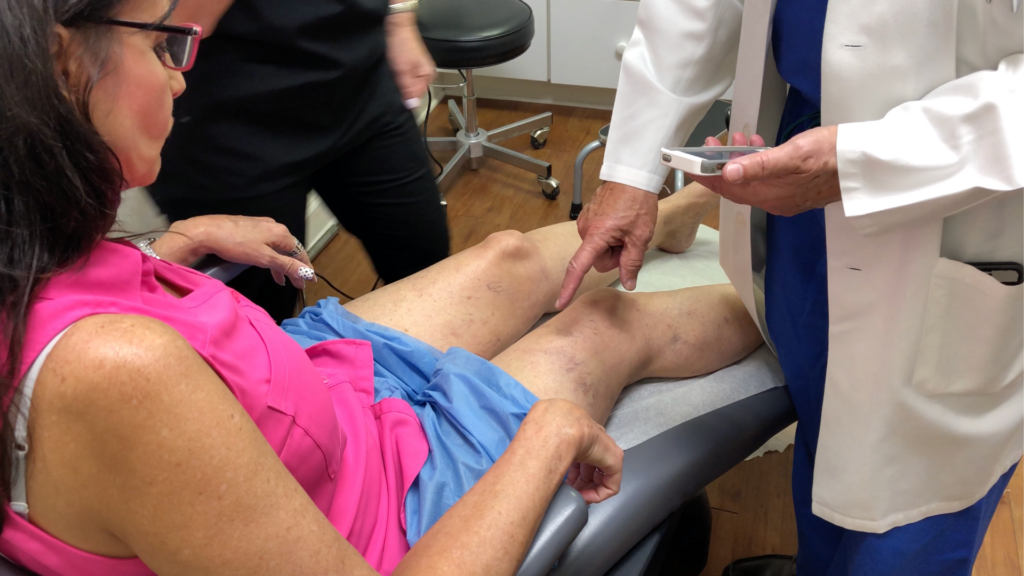Having healthy looking legs can be important, especially in Florida where shorts season is almost year round. In addition to being a source of embarrassment and dismay for some, varicose veins can also cause pain and discomfort.
“One of the frequently asked questions I get is what is the underlying cause of varicose veins?” says Gabor Kovacs, M.D., F.A.C.S., a board-certified vascular and general surgeon at the Vein Care Center of Amelia Island. “And the most common cause of varicose veins is venous insufficiency. The saphenous vein is a vein that runs from the groin down to the ankle and has valves in it. When those valves are incompetent, they allow blood flow in reverse.”
What Are Varicose Veins?
Varicose veins show up commonly in the legs as enlarged, twisted, bulgy, bluish-purple contortions just under the surface of the skin. They can be minimal in appearance or appear as large, rope-like structures.
Normally, one-way valves in the leg push blood up toward the heart to keep blood circulation flowing freely. If these valves fail, blood will back up, causing the veins to swell — which can result in discomfort, aches, and cramping.
“Instead of the blood flowing from the foot to the heart, it allows reflux of blood going in the opposite direction,” says Dr. Kovacs. “And this reverse flow causes an increase in pressure in the superficial veins, which results in bulging veins that are called varicose veins.”
Varicose (literally meaning ‘swollen’) veins can cause:
- Leg pain
- Aching and cramping
- Inflammation
- Difficulty standing for prolonged periods
- Swollen ankles
- Skin darkening and skin wounds
The veins may have a characteristic enlarged unsightly appearance in the lower legs, and the legs themselves may feel heavy or fatigued quickly. In extreme cases, varicose veins may break open, or ulcers may appear on the skin.
Who is at Risk for Varicose Veins?
 According to the Society for Vascular Surgery, varicose veins can occur in almost anyone and affect up to 35% of people in the United States. However, a myriad of factors may increase the risk for varicose veins, including:
According to the Society for Vascular Surgery, varicose veins can occur in almost anyone and affect up to 35% of people in the United States. However, a myriad of factors may increase the risk for varicose veins, including:
- Family history
- Old age
- Gender
- Pregnancy
- Being overweight
- Lack of mobility
- Leg trauma
Females are more likely to have varicose veins on their legs than males. And one may inherit a tendency to develop varicose veins from a parent. Older women, women who have had several children and obese persons are at a higher risk. Jobs where people need to spend extended periods of time on their feet, increase the chances of developing venous insufficiency as well.
Treatment for Varicose Veins
The Vein Care Center of Amelia Island offers the latest treatment options to help solve varicose vein problems. Some of the more common treatments for varicose veins include:
- Venous Laser Ablation – A treatment option to treat the larger veins in the leg. A catheter is inserted into the vein. The laser emitted from the catheter causes the vein to close.
- Phlebectomy – This procedure removes smaller varicose veins through a series of tiny skin punctures.
- Sclerotherapy – This treatment uses a liquid to close off a varicose vein and make the vein disappear. This is particularly useful for very fine spider veins.
- Vein Stripping – This procedure is often for severe cases and involves removing the most extensive ropey veins that cannot be treated in other manners.
- Treatment of the complications of varicose veins – including treatment of clots, swelling, bleeding and bruising related to varicose veins.
If you think you may need to see a specialist for your varicose veins, please contact our office or call (904) 572-3074 to schedule your consultation today.
